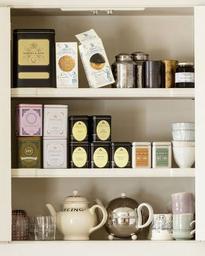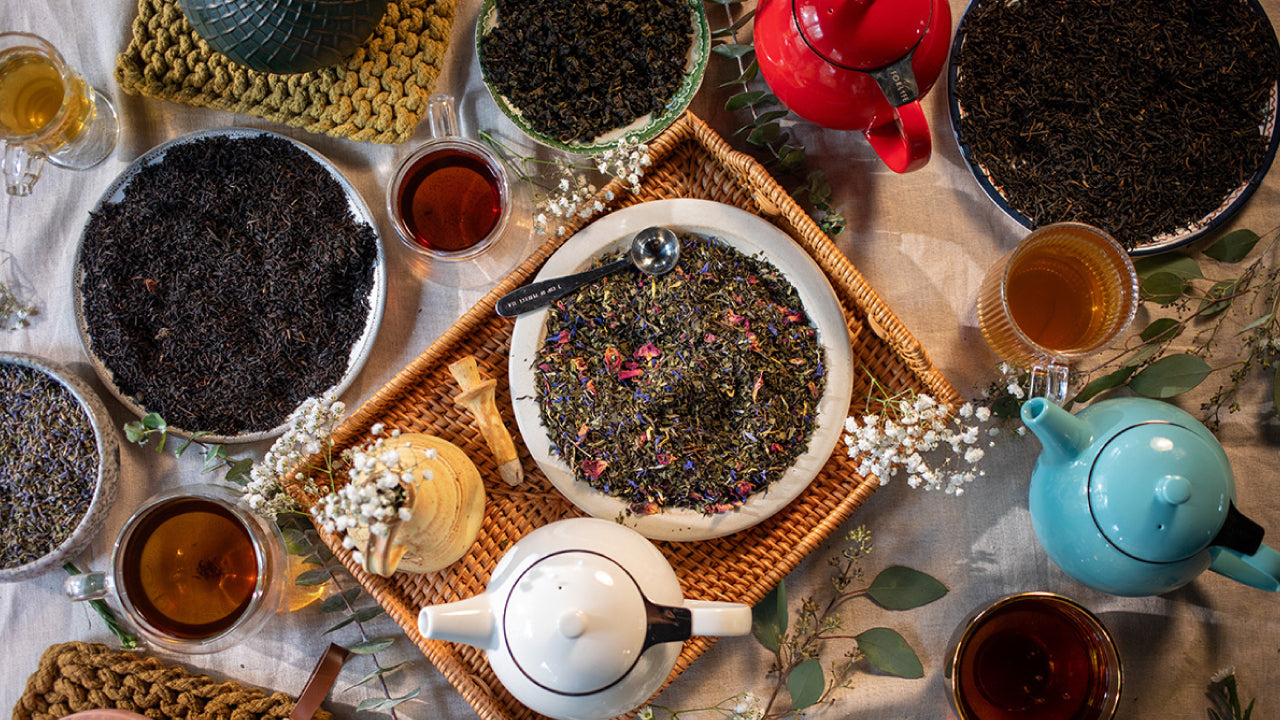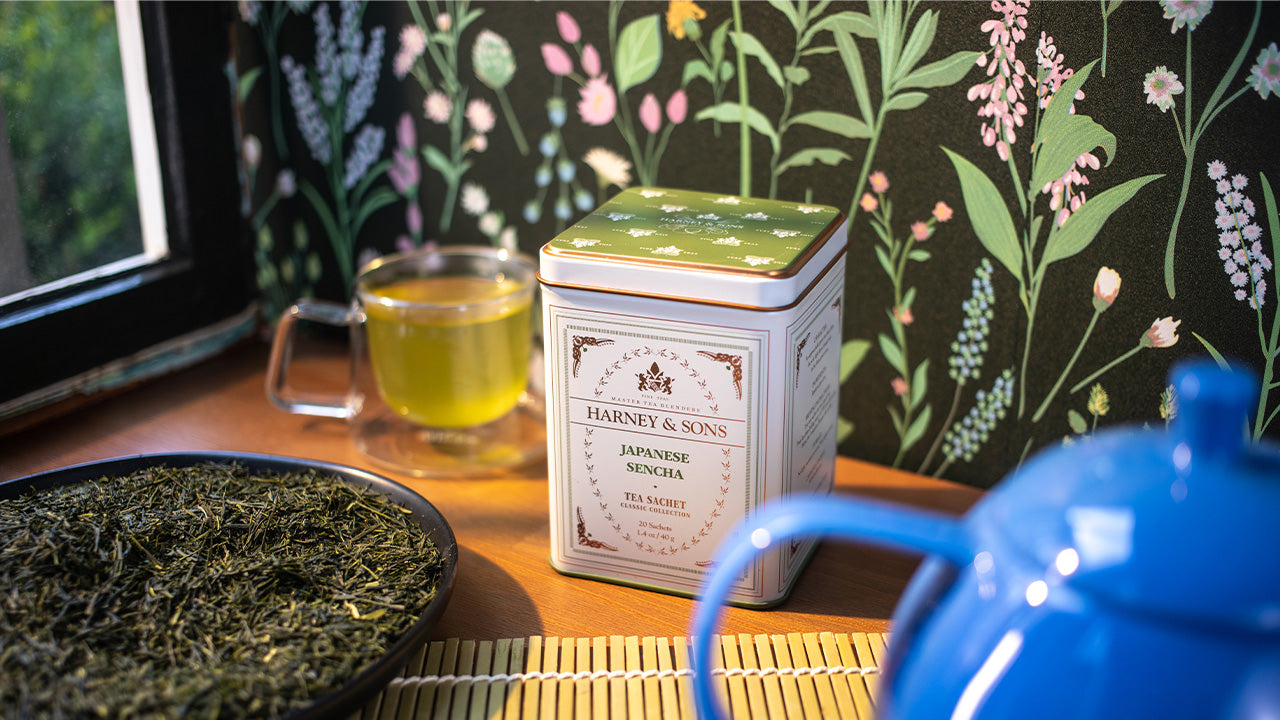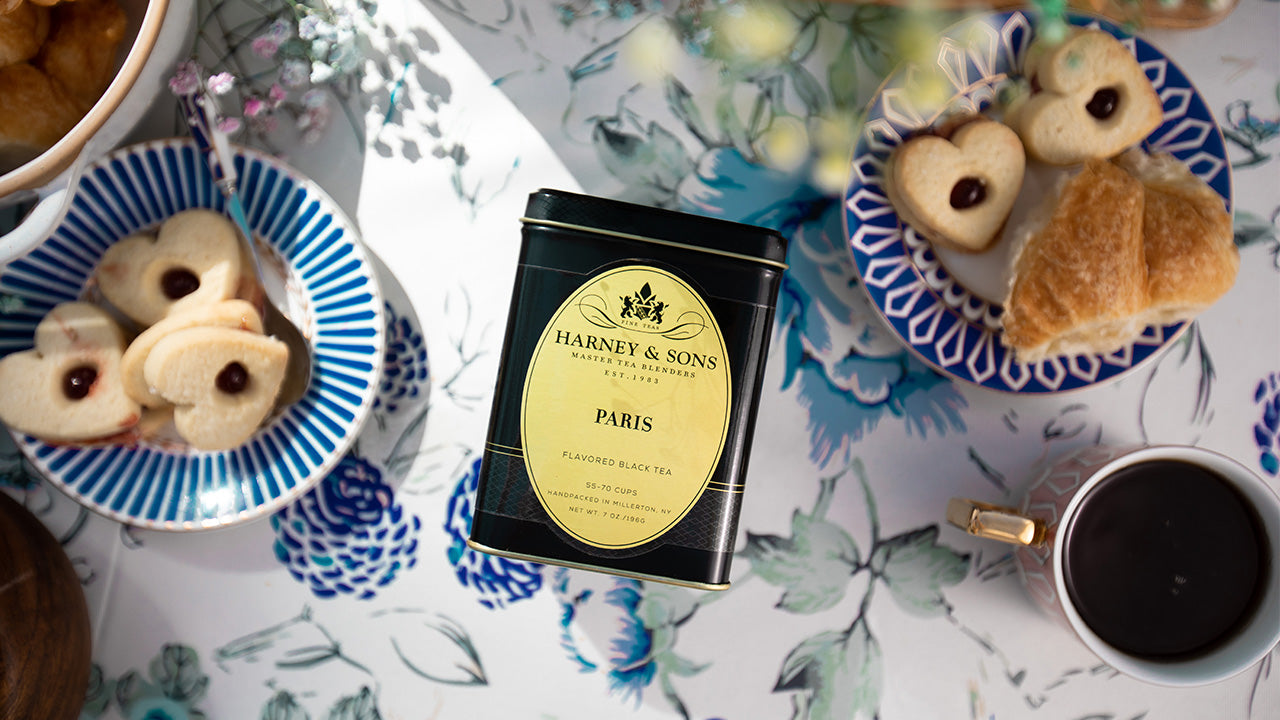Most tea drinkers likely think that “loose leaf tea is loose leaf tea” – that there aren’t different types of loose leaf teas. Well, there are! In this article, we’ll help you understand the difference between types of loose leaf teas, and we’ll talk about how to brew loose leaf teas so that you can get the most enjoyment out of your cup or pot.
Whole Leaves
After tea leaves are fired, which is part of the flavor fixing process that most teas go through, tea makers sort the teas by leaf size by agitating the leaves through a series of screens. Whole leaves impart the fullest array of flavors; they are separated out first for the best-quality teas.
[If you’d like to take a deep dive into how tea is made, read my dad’s “From Tree to Tea” articles, Part 1, Part 2, and Part 3.]
If you’re a tea connoisseur, there simply is no other way to make a cup of tea than with loose leaves. There’s science behind this. Tea leaves need room to expand for full-bodied flavor; loose teas, when placed into a tea strainer or infuser, are free to bob up and down in the water, which surrounds every part of the leaves and creates a fuller flavor experience.
To give those beautiful full tea leaves plenty of room to “swim,” you’ll need a nice roomy infuser like the ones we carry. Many of our cups and mugs, as well as teapots, come with their own infuser to make brewing loose leaf tea even easier. Tea balls like many of us used back in the day – and which are still in existence now – are not ideal for brewing loose leaf tea because they don’t allow enough room for the tea to expand to its full delicious potential.
Another benefit of loose tea that probably didn’t occur to you is that it’s economical. Tea leaves can be steeped multiple times, which means you’re getting more brew for your buck. Brewing loose leaf tea also allows you to make a cup that’s unique to your individual taste – you can use more or fewer leaves depending on how strong you like your tea. Finally, loose leaf tea gets sustainability points for its lack of packaging, for which our environment is grateful.
If you’re picking up what we’re putting down about the benefits of full loose tea leaves but still don’t want to deal with infusers and measuring leaves, etc., there’s no need to worry! Many of Harney & Sons sachets contain full tea leaves. This is because our pyramid-shaped sachets – most of which are now made from a sugarcane-based material – allow for better flow of water to surround the tea leaves and expand. Sachet bonus: we’ve already done the measuring for you, ensuring you get an amazing cup of tea every time.

Broken, Fannings & Dust
After full leaves, the next smaller particles are called “broken.” Broken tea leaves make strong, brisk cups of tea. This is because they infuse faster than whole leaves.
Fannings and dust are the smallest particles of the tea leaf. Fannings get their name from the fans that were once used to sort them – before the age of machines, tea makers sorted the leaves by tossing them into the air from a large bamboo fan. The leaves that were light enough to blow off onto the floor were separated as fannings, and the ones large enough to fall back into the fan were reserved as the best tea. Fannings and dust are set aside for teabags and instant teas, the latter of which we do not make for what we hope are obvious reasons. You’ll find fannings in Harney teabags, but never dust.
Many people prefer teabags for their convenient size – and there’s nothing wrong with that! At Harney, we source only the finest teas, so if teabags are your jam, know that you are getting high-quality teas that will always deliver a great sip.

How to Brew Your Tea
No matter if you wonder how to brew loose leaf tea, or brew tea in sachets or teabags, we’ve got it all covered in our Making the Best Cup of Tea of Your Life. Ready to dive into brewing loose leaf teas? You can get started here, but if the choices are overwhelming, we might suggest some classics like Organic Darjeeling, English Breakfast, Chamomile, Japanese Sencha, Orange Pekoe, or Dragon Pearl Jasmine. Whichever tea you pick, enjoy exploring the tasty world of loose leaf teas!




